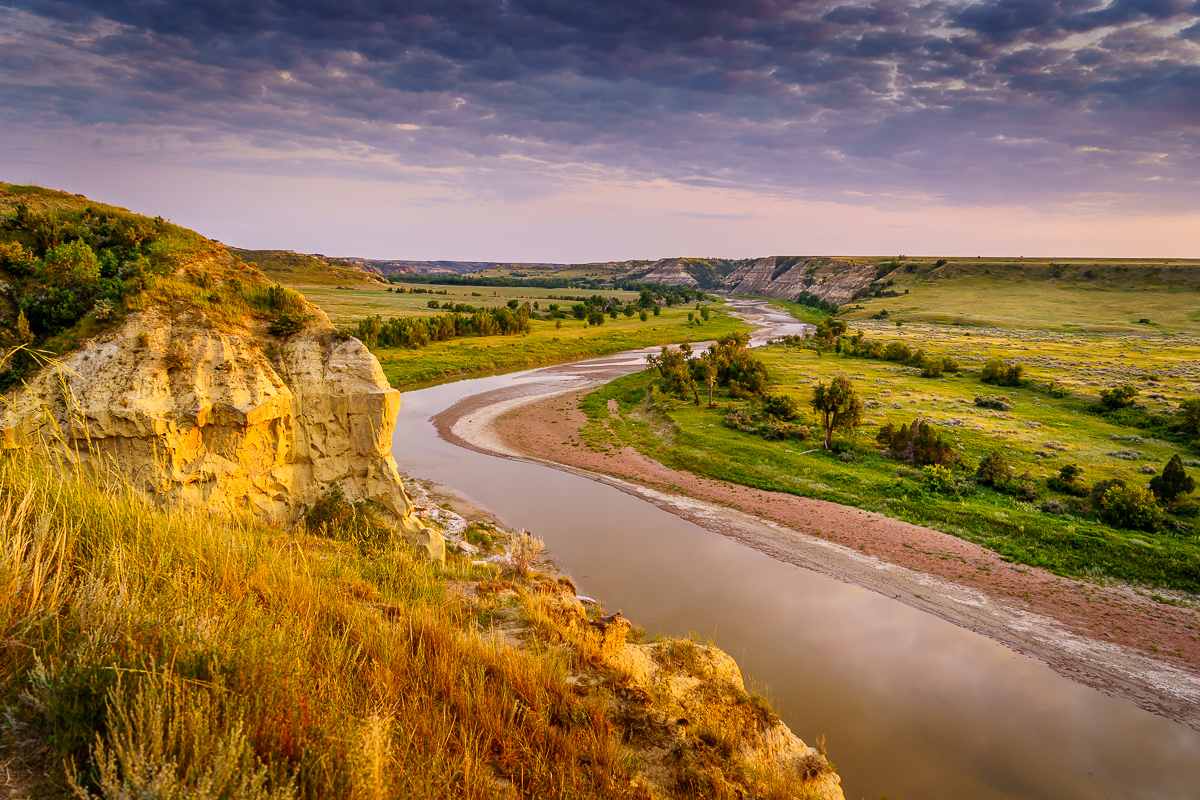
“Life is a great adventure…accept it in such a spirit.” ~Theodore Roosevelt
After my time in South Dakota visiting Badlands National Park, I headed to North Dakota to visit Theodore Roosevelt National Park. During my Navy years, I was stationed aboard the USS Theodore Roosevelt (CVN-71) and felt it would be a nice tribute to visit the very land that Theodore Roosevelt loved so much.
Only a day’s journey straight up US Route 85, it was a somewhat flat, relaxing drive pulling my 5th wheel RV. Once in the area, the town of Dickinson was chosen as base camp. It was 35 miles away from the park but offered amenities in the way of stores and restaurants. Something missed while in the Badlands. In hindsight, setting up base camp closer to the primary shooting location makes more sense. Now one of my standard operating procedures for all trips.
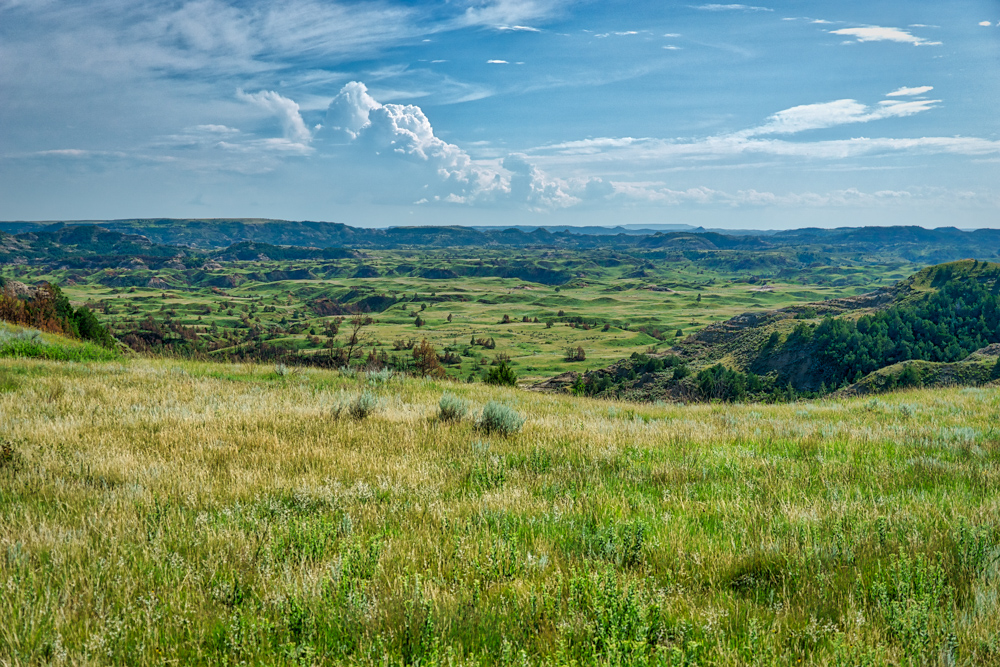
The land making up Theodore Roosevelt National Park is beautiful country. One thing I did not expect was the park is actually broken into three separate locations. The larger South Unit located near Medora, North Dakota, the smaller North Unit located approximately 50 miles north, and Elkhorn Ranch roughly halfway between the two. All sections of the park are part of the larger Little Missouri National Grasslands and Little Missouri River.
My first several days were spent scouting the two units of the National Park looking for photo and video opportunities. Three possibilities presented themselves for this trip. The wild bison are plentiful throughout both the north and south units, the wild horses of the south unit, and the scenic landscapes throughout Theodore Roosevelt National Park.
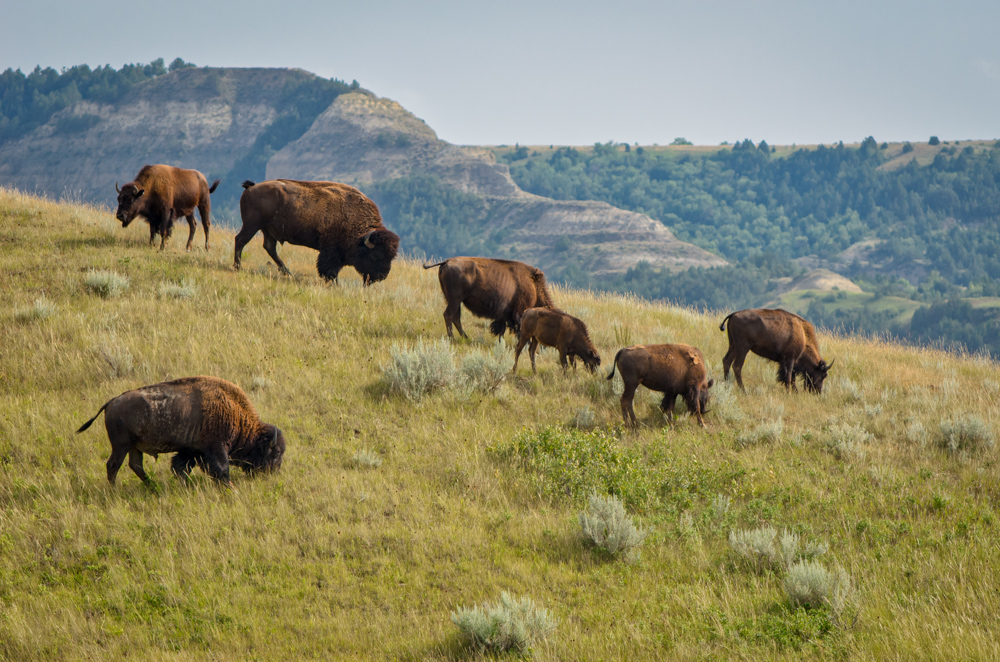
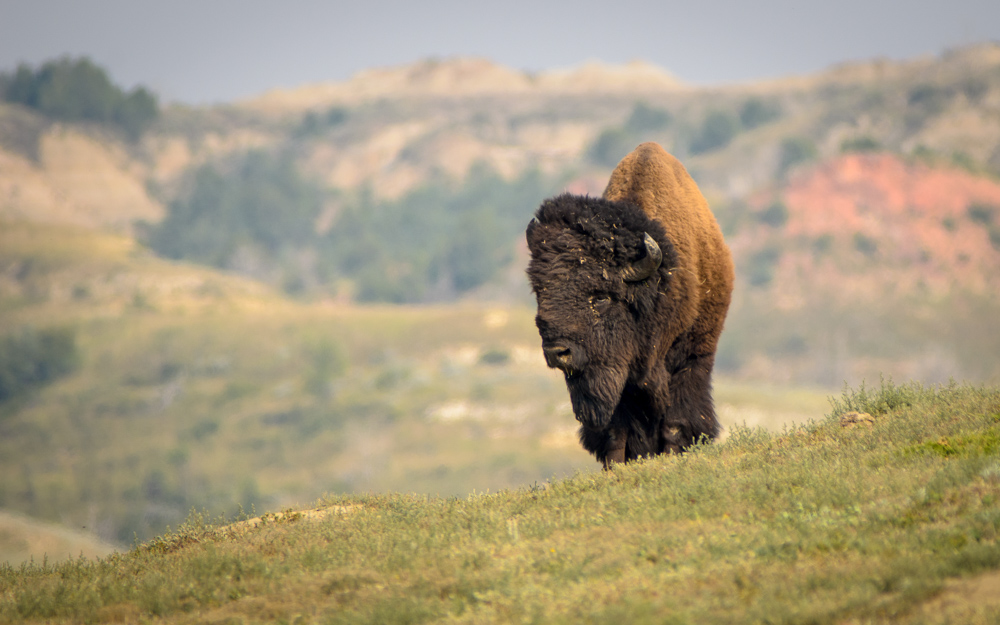
Typical for me, I choose to concentrate most of my efforts on the wild bison. The beasts fascinate me, and I can watch them for hours. During times of low bison activity, I shifted my attention to some of the magnificent landscapes offered.
During the second week in the park, temperatures climbed into the low 90s. The vast majority of bison moved towards the west side of the park. I’m assuming to be near their main water source, the Little Missouri River. Not that I’m a bison expert or anything. Regardless, I took advantage of several hundred bison in the same general location.
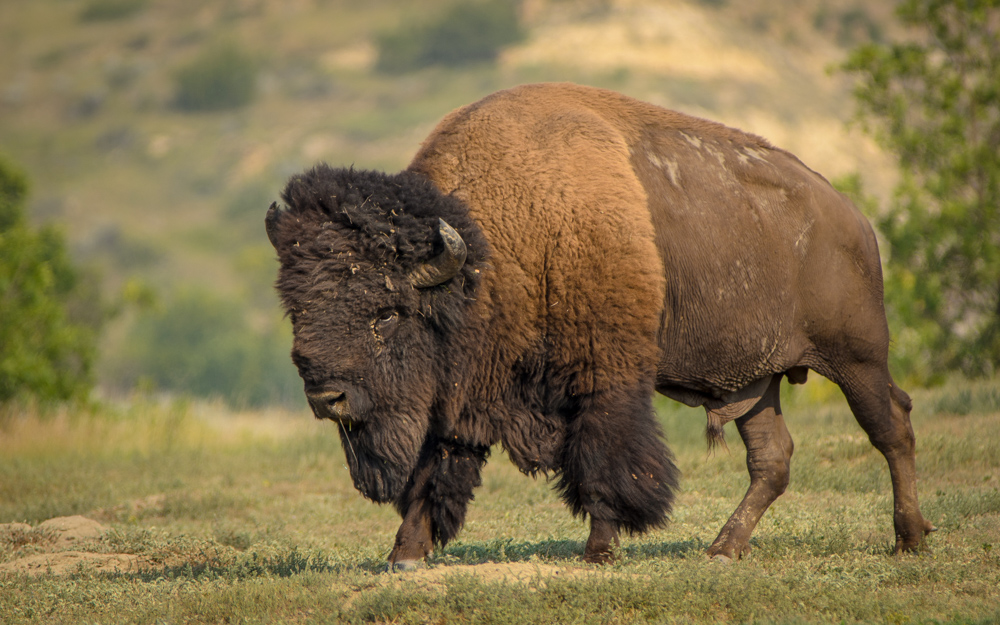
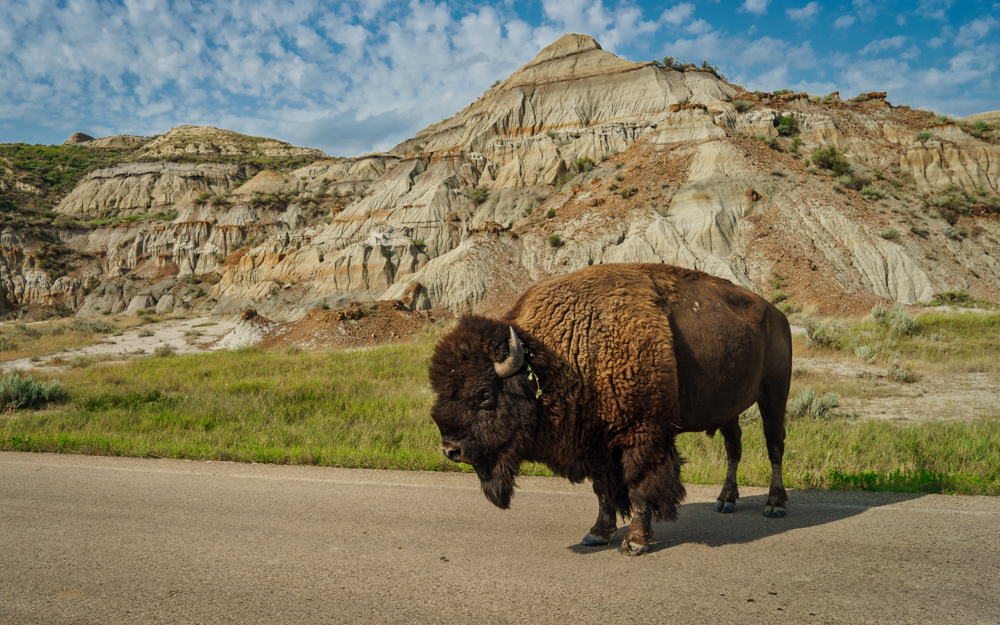
Being in and around hundreds of bison can make for some tense moments. I would love nothing more than to be able to walk amongst the herd while making photos. These are wild bison though and currently in their annual “rut,” so very unpredictable and deadly. My photography stayed confined to safe areas, primarily my 8000 pound diesel pickup truck.
Sitting in and on top of my truck, I never felt personally threatened by the herd. I did fear having to explain to my insurance company how a herd of bison is responsible for rearranging my fenders and doors. Especially the big bison bulls who seem to enjoy standing in the middle of the road, refusing to budge. I’m not sure if they are challenging me or find the roads to be a good vantage point over their herd. Regardless, it’s intimidating trying to get past them.
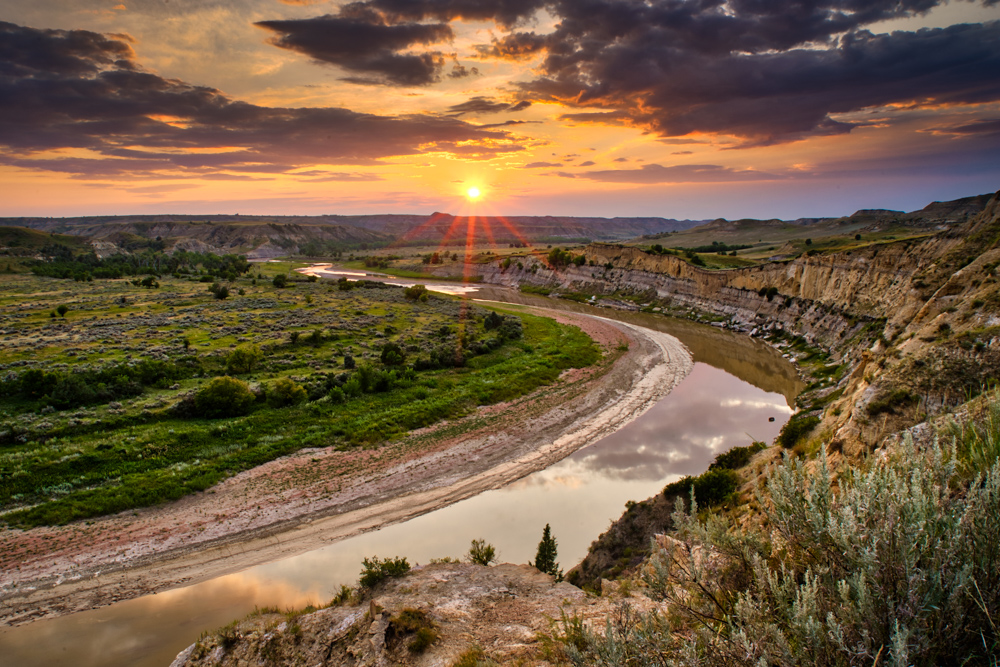
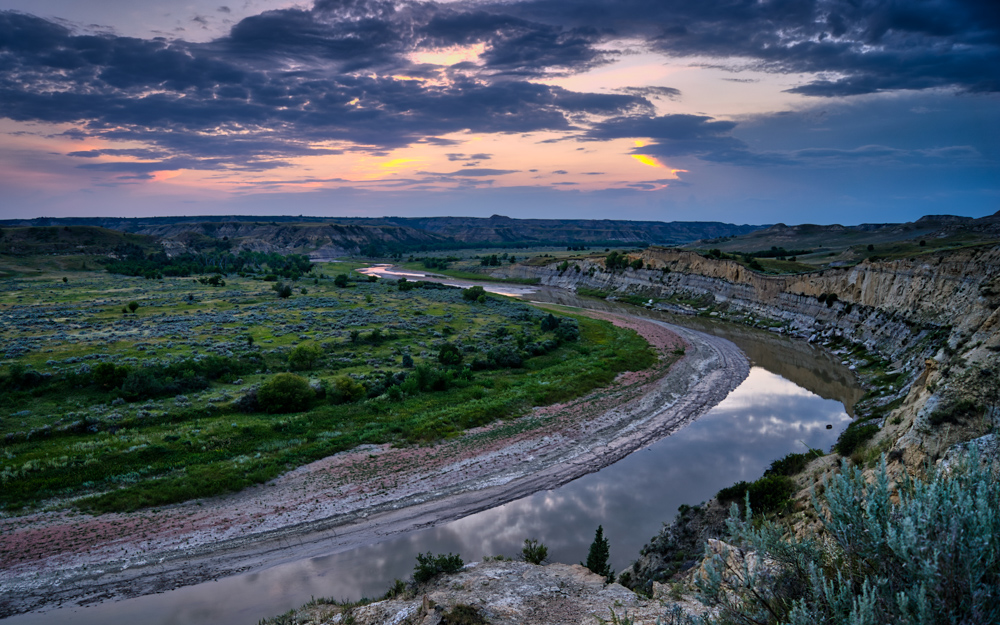
I spent two weeks at Theodore Roosevelt National Park. Typical of all National Parks, it was not enough time. I could easily spend a few months photographing the bison alone. Having commitments on the eastern half of the United States though, it was time to move on, make repairs on the RV, and prepare for my next adventure.
I hope you enjoy my postcards from Theodore Roosevelt National Park. The next time you are traveling through North Dakota, I encourage you to spend a few days at the park where bison, wild horses, and scenic landscapes abound.
